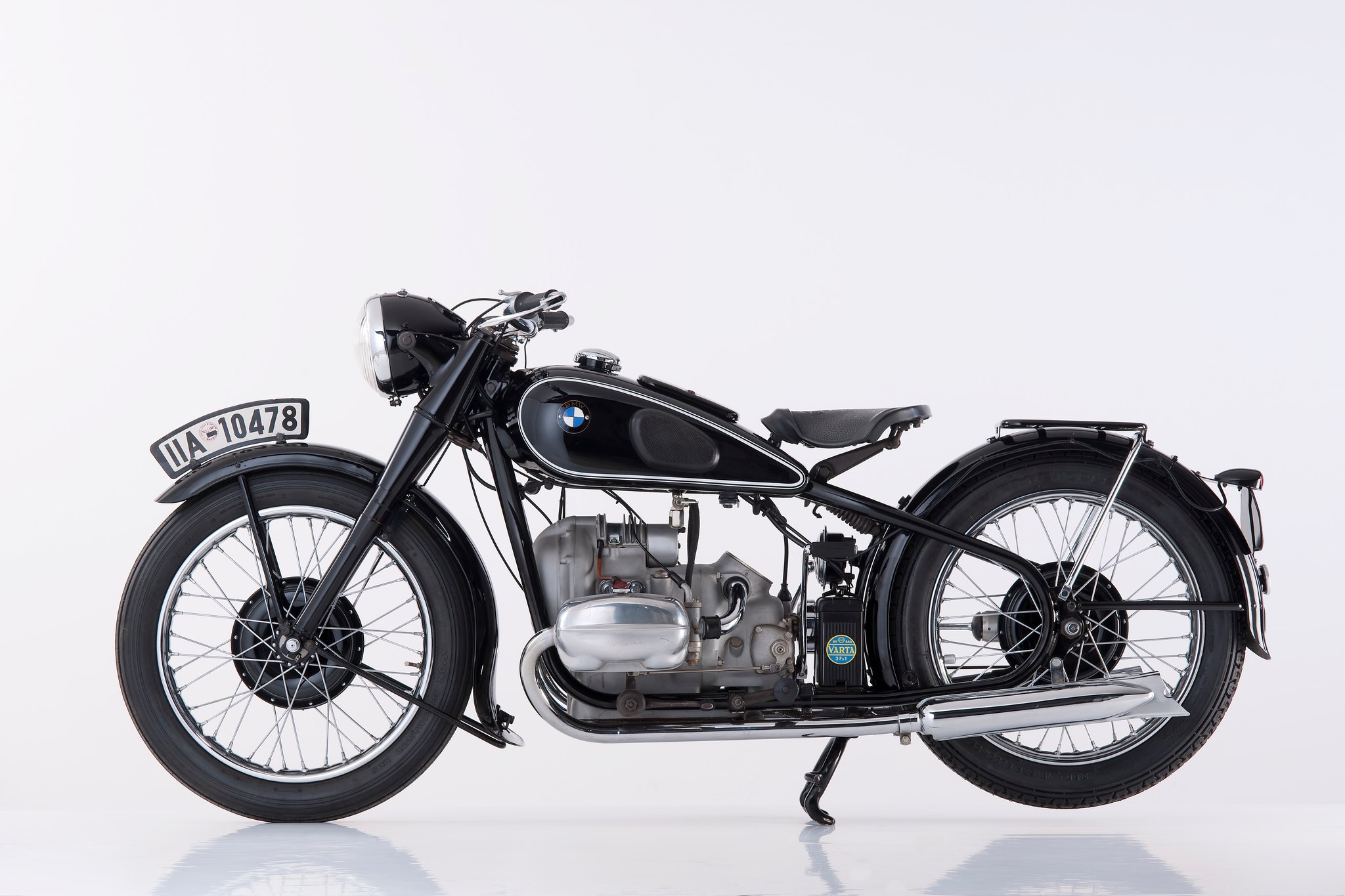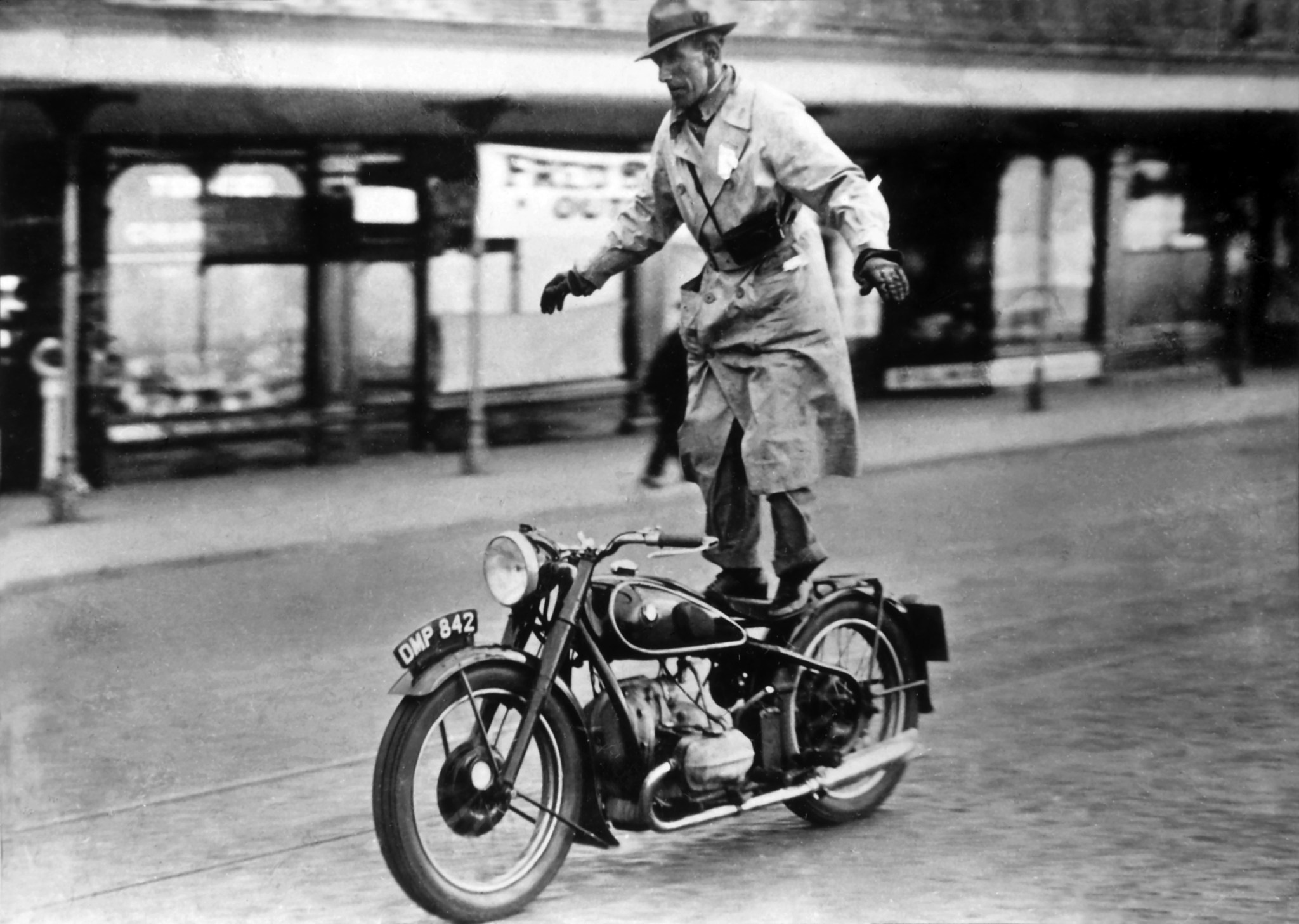Motorcycle Investor mag
Subscribe to our free email news
BMW R5
(by Ian Falloon, Mar 2022)

Falloon on
one of BMW's foundation stones
Sometimes a motorcycle comes
along that initiates an engineering and performance
benchmark exemplifying an era, and during the 1930s this
was arguably the BMW R5.
Circumstances at the time
undoubtedly contributed to R5’s supremacy. While the
British motorcycle industry struggled to survive during
the Depression, in Germany the Nazis saw technological
domination, particularly of motor sport, as one of the
most effective sources of international propaganda.
While motorcycle racing
wasn't as strong a propaganda tool as Grand Prix car
racing, motorcycling was still a popular activity during
that depressed decade. And as it was an industry almost
totally dominated by British manufacturers here was an
avenue the Germans could make their mark.
With the German government
providing the necessary funds, BMW was able to make its
first purpose built racing engine, the 500cc Kompressor,
as well as develop a new range of street bikes. The
first of these was the 500cc R5 of 1936, and it
represented a significant breakthrough for BMW.
Central to the R5 was a new
flat-twin engine with two chain-driven camshafts mounted
above and to each side of the crankshaft allowing short
pushrods. The timing chain also drove the Bosch
generator on top of the crankcase, with the ignition
coil and distributor positioned inside the front cover.
The included valve angle was reduced to 80-degrees, the
rocker arms pivoting in needle roller bearings, with
double hairpin valve springs to provide safety at higher
rpm.
The crankcase a one-piece
tunnel type, with the crankshaft inserted from the
front, a design that would characterize BMW flat twins
for decades to come.
With twin 22mm Amal
carburettors, ironically built in Germany under license,
the 68 x 68 mm engine produced 24 horsepower at 5800rpm.
This may not sound particularly impressive by today’s
standards but it was enough to provide the R5 with
considerably more performance than its 33 horsepower 750
cc R17 predecessor.

The main reason was the
tubular-steel frame. Previous BMW motorcycles featured
an archaic and heavy pressed-steel frame but the R5’s
electrically-arc and gas welded (a process termed
Arcatron) tubular-steel duplex frame was similar in
design to that of the 500 Kompressor. It featured the
same exotic combination of round and oval section
tubing, selected according to the load expected.
Not only did the duplex
tubular welded steel frame impart a more modern
appearance but the unladen weight of the R5 was a svelte
165 kilograms compared to the R17’s hefty 183 kilograms.
In many other respects the R5
was also more modern than the earlier R17. A foot pedal
on the left, as well as a right-side hand lever, now
controlled the four-speed gearbox. As this positive stop
gearshift design originated with Harold Willis’ 1928
Velocette it demonstrated BMW’s openness to
incorporating new ideas, even foreign.
While the R17 may have
pioneered the telescopic front fork, the R5 went a step
further, incorporating an external damping adjustment.
The rest of the running gear was standard BMW for the
period, with 19-inch wheels and 200mm drum brakes, front
and rear.
It was only the rigid rear
end that limited the ride quality but this was
compensated through a softly-sprung Pagusa rubber seat.
The works racing bikes were fitted with plunger rear
suspension in 1937 and this was subsequently adopted on
the R51 from 1938.
The R5 provided exceptional
sporting performance for the mid-to late 1930s. The top
speed was around 140km/h and many enthusiasts rated the
handling of the rigid-frame R5 superior to the later
R51.
One of the standout machines
of the decade, the R5 was a milestone in BMW motorcycle
history. The R5 finally challenged the British in
performance and handling and provided the basis for BMW
twins for the next twenty years.
-------------------------------------------------
Produced by AllMoto abn 61 400 694 722
Privacy: we do not collect cookies or any other data.

Archives
Contact





